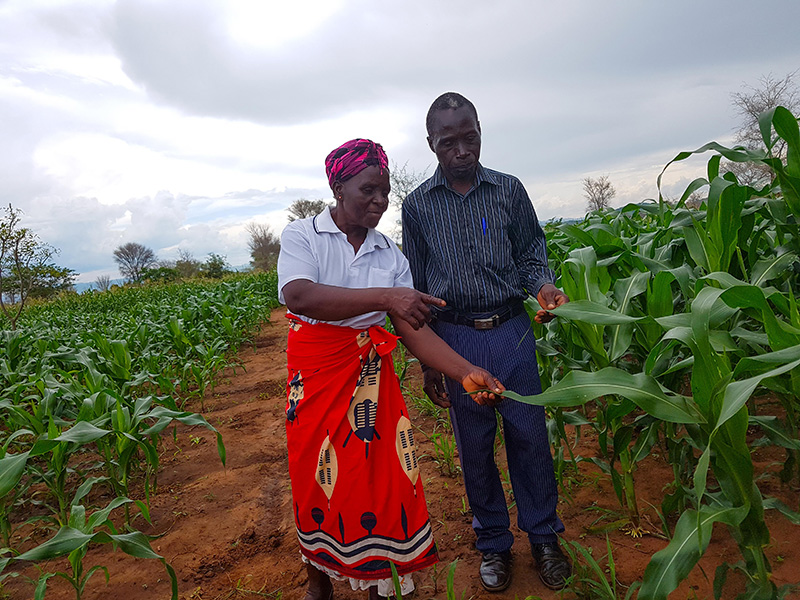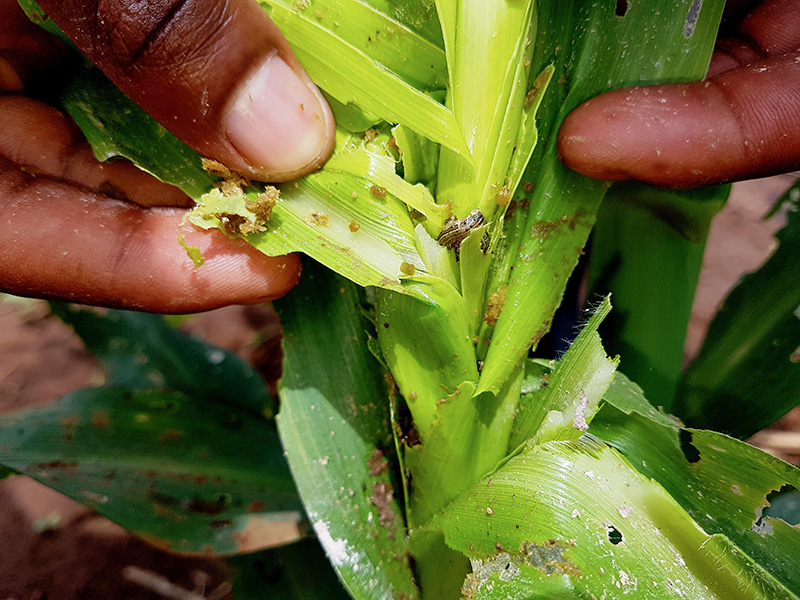Push-Pull and fall armyworm: First account
In early 2016, the Push-Pull technology was introduced to Malawi and Zambia through the Push-pull sub Saharan Africa, funded by Biovision Foundation for Ecological Development, Switzerland. icipe and partners are now testing the technology on-station and on-farm. Among farmers who were involved in the trials is Mr Alex Chingoli from Salima district, central Malawi. Mr Chingoli was the first farmer to report the possibility that Push-Pull could be tackling the fall armyworm. Below is his story.

I have been a farmer since we were resettled in Salima district, central Malawi, in 1986, working alongside my wife Ruphina. Like many other people in my region, and I am sure in Africa, we dedicate a significant part of our land to maize cultivation, as it is one of our main staple crop. But we face a number of problems in growing maize, among them damage by Striga and stemborers, while our soils are also become less fertile.
In 2016, the Push-Pull technology was introduced in Malawi by icipe and Total LandCare, a non governmental organisation working in Malawi, in collaboration with the country’s Department of Agriculture Research Services. I was very pleased to be chosen as one of 30 farmers to be involved in trials to assess how the technology would work. I was selected because I was already a Total LandCare lead farmer. These are individuals who are chosen on the basis of their successful adoption of other agriculture activities as well as influential role in the community. The role of lead farmers is to motivate others by example; by practising what they are taught in their own fields. As a Push-Pull lead farmer, I established two plots: one with the climate smart version of the technology and the other mono-cropped maize as control.

Between December 2016 and January 2017, around the same time that the Push-Pull trials started, we noticed a new pest in our farms, and it was soon officially announced that the fall armyworm had arrived in Malawi. Of course, for us farmers, this new pest caused great concern, seeing that it was an added problem to an already challenging situation in maize cultivation. As the season went along, I noticed something interesting: the fall armyworm appeared not to attack the Push-Pull plot. In sharp contrast, the control plot was heavily infested by the pest, as were neighbouring farms not using the technology. To me, this indicated that although Push-Pull was designed for other pests, the technology was having an impact on the fall armyworm.
I shared my observations with the Push-Pull researchers, and I understand that they have now conducted verification studies and found that indeed, the technology is capable of tackling the fall armyworm. Naturally, the availability of a solution to reduce the damage of this invasive pest is good news for us.
I am personally delighted that my first harvest since I started using Push-Pull was 500 kilogrammes of maize, twice what I obtained from the control mono crop plot.
It is my hope to continue to motivating other farmers to use Push-Pull. So far, I have received close to 60 visitors from Malawi and Zambia, and even from outside Africa.

